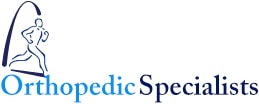Labral Repair
A posterior capsulorrhaphy is performed for mild posterior instability. Several small sutures are placed arthroscopically to “crimp” or decrease the size of the posterior capsule. Posterior labral tears are also repaired with this technique by using bioabsorable suture anchors place in the rim of the glenoid. The sutures are passed around the labrum repairing it back to the bone, but can also be passed as capsulorrhaphy stitches shrinking the size of the capsule in the setting of stability. Postoperative care should focus on avoiding internal rotation and horizontal adduction.
Recommendations:
- Wear the sling with wedge position the long distal forearm / wrist until 4 weeks postop to prevent significant internal rotation
- No driving until patient has painless, functional ROM (must be out of sling)
- Ice 3-4 times per day as needed for the first week, then as needed thereafter
- PROM limits: Forward elevation 90 degrees, abduction to 45 degrees, internal rotation (in 0 degrees abduction) to 30 degrees, no horizontal adduction and external rotation to tolerance for 4 weeks
- Return to work and sport to be determined on an individual basis by the physician
Post op Protocol:
Weeks 0 – 4:
- Instruct family member in proper PROM techniques and ROM limitations (if any). Have them perform a supervised demonstration
- Educate the importance of proper posture in sitting and standing
- Wean from sling (daytime) in a controlled environment after 2-3 weeks. Sleep in a sling for 4 weeks. Discontinue sling completely by 4 weeks
- Easy PROM within limitations
- Soft tissue massage once portals heal
- Progress to wand exercises for external rotation (arm at side) to tolerance
- Shoulder shrugs in supine
- AROM of all upper extremity joints distal to shoulder with elbow supported
- Mass grip exercises with tennis ball or therapy putty
- Begin submaximal isometrics in all planes except extension
Weeks 4 – 6:
- Begin AAROM progressing to AROM
- PROM to tolerance avoiding aggressive internal rotation and horizontal adduction
- Easy AAROM progressing to AROM as muscle control allows within ROM limits beginning in supine, i.e. wand exercise for forward elevation only while supine)
- Begin gentle manual resistance for scapular protraction / retraction and elevation / depression
- UBE (no shoulder distraction)
Weeks 6 – 8:
- PROM to tolerance
- AROM within pain-free ROM
- Begin to push PROM
- Pulley for forward elevation and abduction
- Row machine (vertical grip and no shoulder distraction)
- AROM with emphasis on rotator cuff exercises, with out resistance, including side lying external rotation and standing forward elevation < 90 degrees. Progress to prone horizontal abduction (thumbs up) at 100 degrees, prone external rotation in 90 / 90 position, and prone extension, all within pain-free ROM
- Progress to TheraBand for internal and external rotation in 0 degrees abduction
Week 8 – 12:
- Begin RROM within pain-free ROM
- Gradual progression of functional activities if ROM and strength allow proper mechanics of the shoulder complex
- Begin stretching into horizontal adduction and internal rotation. Should be within the end range limits by 12 weeks
- Progress PRE’s as appropriate
- Begin gentle CKC exercises in a slightly horizontally abducted plane to avoid straight posterior directed forces
- Begin low-level plyometric progression including 2 hand plyoback toss, ball dribbling, etc
Week 12 – 16:
- Equal strength, bilaterally, by 16 weeks
- Emphasize concepts of frequency, duration, and intensity of training
- Progress CKC exercises to include seated press ups, step ups, BAPS board, treadmill and pushups with a plus (wall to floor progression)
- Begin endurance training with emphasis on upper extremity activities (e.g. UBE)
- Begin multi-speed isokinetics as appropriate
- Begin limited sports specific activities
Week 16+:
- Progress sports specific activities including interval throwing and swinging programs
- Return to sports to be determined by MD (Usually 4-6 months)
